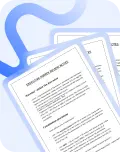#16989 - The Treaty 4 April - Legal Foundations (LAWS110)
Legal History
4 April
The Treaty of Waitangi
Partnership
Colonisation
Aims:
Relevant to all NZers- not just Maori
An understanding that the Treaty is relevant to contemporary New Zealand society
~ The treaty is a living document
With its own mana
An understanding that there were guarantees made and rights and responsibilities exchanged through the signing of the Treaty that must be upheld in a just and reasonable society.
NZ was not unified state, hapu (subtribes) geological power, lots of nations, concept of one people.
Pakeha- usually European descent. Nowadays it is applied to all NZers.
The treaty is something between Maori and Pakeha.
Mana= others give it to you, standing, recognising importance, mana of document
The Mihi Method
Maori indigenous health initiative – treat Maori patients
Maori methodologies of greeting
Mihi- greeting
Whakawhanaungatanga- connection
Genealogical (family, kids etc)
Place (town, mountain, area, sea, river…)
Life and experience (past education, work etc.)
Kaupapa (the reason for the interaction)
Poroporoaki (check for understanding, what will happen next, clear about next steps)
Founding document
Lack of understanding
Treaty settlements
Dissatisfaction from Maori
Tangata Tirti- people of the treaty, Early English settlers, gold miners, recent immigrants, all come through the treaty. New Zealander- here by right of treaty. obligation that the Crown upholds the rights, a place for all of us under the treaty.
Tangata Whenua- iwi, hapu, whanau
Hobbson, signed on behalf of Queen Victoria.
Could be called “the first immigration document” Maori let others come, if you come here, you must look after our rights.
How do we get back to partnership- both treaty partners have a say. Space of belonging for all peoples.
Bicultural- many cultures coming together in a relationship, move forward in a nation.
Rights and privileges responsibilities
Misinterpretation of words in treaty- Sovereignty= kawatanga
Tino rangitiaoa= Maori
Both believe they have sovereignty- conflict
Maori keen to have British to come
Building- hammers, nails
British bring potato
Maori see it as beneficial- different technology- keen to have this. They wanted to retain authority and power
British were not interested in NZ
Russel- missionaries- hell hole of the Pacific. Gambling, drinking. Petitions for British to do something about their people like whalers.
Different Maori iwi were warring with each other
Though Missionaries were good, reading and writing – good for trade with whalers. Introduced Muskets
More died in musket wars than WW1 and WW2
Concerned about welfare of Maori
Knew there was British...
purchase it now!

